


UNDP support to expanding access to energy with renewable sources
Lessons from evaluations
Lead author: Ben Murphy
Research associates: Lucia Sobeková, Andrea Arenas, Anna Kunová





Lessons from evaluations
Lead author: Ben Murphy
Research associates: Lucia Sobeková, Andrea Arenas, Anna Kunová

Supporting access to renewable forms of energy not only offers environmental gains but also improves the sustainability of the energy supply, especially where people depend on imported fuel or biomass in their households and livelihoods.
Significant progress has been made, but based on current policies, a projected 650 million people globally will remain without access in 2030 as populations grow and governments, businesses, and households face financial challenges deepened by COVID-19 and conflicts.
Although the private sector provides the greatest source of investment, many developing countries do not yet offer the conditions to attract such investment or to guide it towards sustainable and equitable development.
UNDP provides support to improve the enabling environment for public and private clean energy investments. Its technical advice

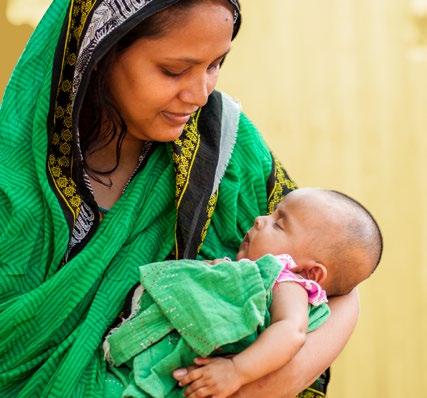
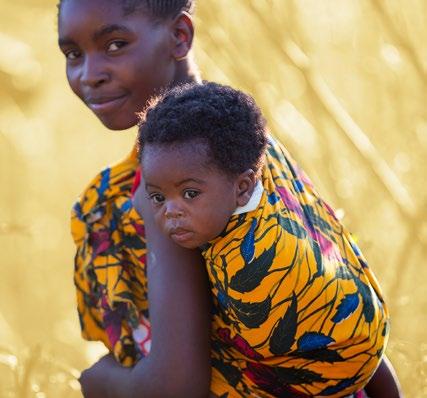
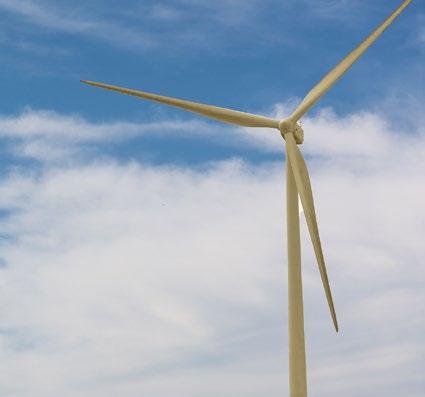




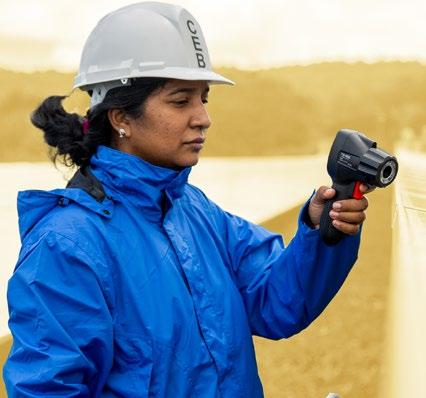




Supporting off-grid and remote populations demonstrates UNDP’s relevance, particularly in advanced energy sectors.
Off-grid initiatives helped UNDP stay relevant in advanced energy sectors
When the national energy sector is underdeveloped, ‘reaching the last first’ increases the development relevance of energy initiatives but introduces significant sustainability challenges.
When the energy sector is advanced or advancing, there is limited need for UNDP to support a centralized roll-out of the grid to improve access.
UNDP projects demonstrated that it is possible to use renewable energy technology to reach remote areas beyond the national grid. In Nigeria, decentralized energy systems offered households and businesses more reliable power as they were not exposed to the risks affecting grid-connected initiative.
Redesigning projects to support off-grid communities maintained the relevance of UNDP activities when grid expansion and other stakeholder activities reduced the need for the activities that UNDP had initially planned.



In the PHILIPPINES, UNDP encouraged local governments, electric cooperatives, and communities to champion off-grid renewable energy initiatives through a platform of capacity building, coordination, and dispute resolution. This led to the installation of nine energy systems co-financed by the project and local governments.

In BURKINA FASO, GUINEA BISSAU, SOMALIA, and older initiatives in GHANA, small-scale projects struggled to provide a source of sustainable electricity supply by themselves and could not convince or capacitate the Government or private sector to sustain their model.
Off-grids, especially mini-grids, require active and constant championing to reduce uncertainty and facilitate progress. In MALAWI, UNDP support guided larger investments from the World Bank, creating an impact wider than what was possible through the project resources.



Participatory barrier analysis can help energy initiatives find locally appropriate entry points and develop feasible plans for increasing energy access in stages.
When the enabling environment is underdeveloped, in-depth barrier analyses can reveal many aspects to consider: awareness, capacities, incentives, regulations.
Achieving the conditions for sustained access to energy is a cumulative process, spanning many years and often decades.
Decentralized energy systems may offer connections sooner than grid expansion but establishing the model and building the confidence for the public and private sector to join still takes time.
Where projects were unable to conduct sufficient analysis of the barriers to expanding energy access, they developed activities that were too advanced for the context, missed opportunities for synergies, or proceeded with incomplete or overly generalized assumptions about how energy access would be achieved.
Projects were also critiqued for overlooking partnership opportunities with other national energy initiatives.



Identifying partners and facilitating coalitions can help secure future funding and project success

UNDP invited private sector stakeholders to national working groups for renewable energy policies, recognizing that energy companies had the best understanding of market weaknesses.
In MAURITIUS and the PHILIPPINES, identifying the hurdles for the greater adoption of renewable energy allowed to focus on a manageable number of foundational changes, and provided investors with a clear map for progress.
The ‘Removal of Barriers’ project in Mauritius attracted new donors to a subsequent, much larger, project: over US$85 million, US$40 million of which from the private sector.
UNDP Zambia


Expanding the adoption of renewable sources requires various forms of capacity from national to the local level.
Collaborating with local academies and leveraging external expertise can help sustainability.
The capacities required to expand access to renewable energy include project, pipeline and financial management; technical expertise in energy systems; and the ability to liaise with community groups.
UNDP programmes commonly build capacity of government staff but can suffer from high staff-turnover rates. It is important to match institutions from other countries or domestic private entities to offer guidance and quality assurance, and to support the multiple specializations required to manage energy systems.
UNDP directly contributed to national capacities and knowledge base on renewable energy by addressing the enabling environment. It developed a suite of frameworks, guidelines, feasibility studies, market assessments, policies and regulations, and in some cases, promoted exchange visits.
Evaluations recognized the practical and catalytic value of these outputs, especially when accompanied by practical demonstration and focused on pro-poor access.



UNDP has contributed to building capacity from multiple angles

In MAURITANIA, addressing weaknesses in the enabling environment allowed UNDP to provide tangible policy achievements despite the project’s downstream components being critically delayed.
Where national institutions can absorb a training programme, some projects developed a cadre of students and schemes for renewing capacities locally.
In NIGERIA, UNDP worked with the Lagos Energy Academy on a course that gave an “end-to-end overview of the process of developing, financing, administering, installing, operating and decommissioning utility-scale solar PV plants”, and plans to provide specific skills once the solar market becomes more mature.


Energy projects need to consider whether demonstration sites are required, and what impact a failure to implement would have.
Demonstration sites are encouraged in UNDP projects, but they come with risks
Most successful demonstrations responded to a government objective and managed to mobilize alternative funding over time. Where the link to a national imperative was weaker, projects increased access but did not catalyze the intended effects.
The results of demonstration projects need to be captured and promoted, with studies targeting high-level decision-makers.
Demonstration sites come with risks. The inability to deliver can lead to delay and even failure to advance on upstream work.

The falling price of solar photo-voltaic equipment raises questions about when and where demonstration is needed. For larger renewable systems (biomass and hydropower), high costs justify further demonstrations before assuming market readiness.
UNDP demonstration sites are rarely large enough to make a meaningful contribution to greenhouse gas avoidance or to the share of renewables in the national system on their own, especially where demand for energy outstrips the pace of renewable uptake.


04 Deciding when to demonstrate
Demonstration via public buildings is a benefit of UNDP’s relationship with the Government


In BARBADOS, UNDP took a comprehensive approach. It provided access to public schools, airports, correctional facilities, sports pavilions, polyclinics, community centres and farms.
In LEBANON and IRAQ, solar panels were provided to administrative buildings.
In UGANDA, a project trialed the use of solar energy on courthouses, the national early warning system, and government hospitals.
In BOTSWANA, installations on school sites were a great opportunity to demonstrate government’s commitment to biogas and to showcase the technology in a hightraffic and important community asset.
UNDP Botswana/Santi Risco

Bringing potential investors along in the demonstration process can build confidence in the long-term vision for renewable energy.

UNDP projects show myriad ways of how to move beyond project funding
Electricity produced by renewable sources has become cost-competitive.
However, financing for energy systems rarely transfers wholesale from government and donor funding to private sector or community ownership in the lifetime of one project, and often requires extended public funding until other investors build confidence.
Attracting investment, especially from commercial lenders, challenged projects in many countries because of nascent technology markets or the risk of lending to local stakeholders, some of which were informal enterprises.
UNDP developed innovative forms of aggregating local financing in ways that reduced the risk for larger investors to finance small-scale and low carbon energy projects in developing countries.
Successful examples of overcoming the initial cost hurdle and securing sustainable funding also saw the involvement of public and private investors in the demonstration.


Projects in NEPAL and UGANDA trialed the use of public-private-partnerships. Ownership of an energy scheme is held jointly by the government, businesses and local organizations, in an agreement which reduces the risks to each stakeholder.
The case of Uganda indicates that the process of securing private sector investors to work with public entities might be lengthy because of legal procedures , e.g. for the establishment of special-purpose vehicles (legal entities that allows multiple investors to pool their capital).


Exploring public-private partnerships was recommended for a geothermal initiative in the COMOROS, which had struggled to mobilize donor resources for the plant and surrounding infrastructure.
UNDP Comoros
UNDP Egypt
06 Considering end users


Off-grid initiatives should consider how energy users assess the associated financial costs, and the contribution that communities often make to energy projects.
For renewable energy uptake, consider the incentives for users
Alongside and after project funding, community and household energy users may be expected to pay for the electricity supply, the maintenance of the system, and any loans taken for the installation.
Projects found ways to tailor payment models to local economies. In Indonesia, UNDP-established village enterprises collect daily fees for electricity use, which was better aligned with villager income patterns, and accepted tradable goods in lieu of financial payments.
Energy users may continue with unclean sources until the prices are advantageous. They may even abandon micro schemes when the grid reaches them. In Malawi, people were reluctant to use the power capacity installed by the project because their existing mini-grids provided electricity for free. In Nigeria, consumers of mini-grid energy were instead willing to pay more because the supply was more reliable.
Uptake of renewables sources was successful when it displaced the cost of diesel. Providing a cheaper option to diesel was achieved at the institutional level for hospitals in Yemen. In Tuvalu, sustaining the switch is said to be dependent on finding a suitable battery replacement scheme.




In EGYPT, community contribution of materials and labour to a biogas unit enabled the project to reduce its grant from 100 to 60 percent of cost and to expand to new areas in line with a government request.
In SIERRA LEONE, the community management of woodlots is projected to deliver a significant greenhouse gas avoidance over time, a best practice to be shared to other countries.
Communities provide land for solar or biofuels, and these contributions require sensitive handling, especially where the area is used for food- production, livelihoods, or has ancestral linkages.
UNDP Egypt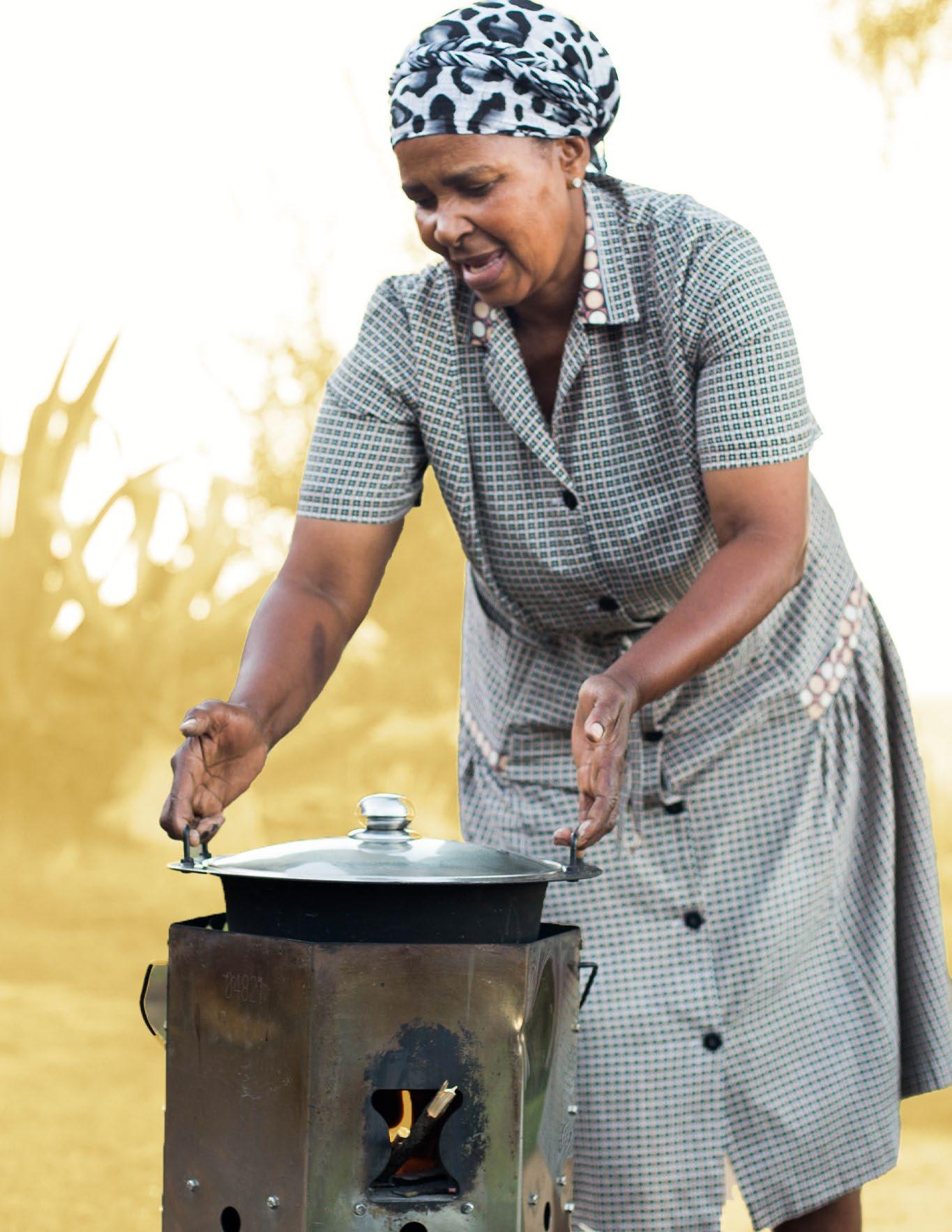


Development benefits need to be planned for rather than assumed.
Projects should consider how a new form of energy would fit with existing social, economic, technological and behavioral practices
Improving access to energy is considered inherently good; however, ensuring that energy contributes to sustainable development can be challenging.
Trying to establish means of energy production for novel economic activities is hard when projects are consumed by the technical difficulties of establishing viable energy connections. In Mauritania, the introduction of new equipment for drinking water and ice-making was not sufficient to induce the local development dynamics intended by the project.
Some projects in middle-income countries linked renewable forms of energy into established livelihood infrastructure, such as the municipal beans and milk production chains in Cuba. Others did not adequately factor in critical considerations such as the level of energy consumption, type of functionality and/or the cost model.
There were some missed opportunities to link access into initiatives where UNDP has a strong offer, such as climate and disaster risk reduction programmes.
With underestimated time and resources, projects also found it challenging to balance support for household access, which may serve poorer groups but has lower productive use, with support for community access, which is generally more expensive but can add value to local production. 07 Planning for development benefits



Cookstove initiatives offer a quick link to economic benefits as they can often be produced by household or local enterprises

Projects in ETHIOPIA and SIERRA LEONE show that is possible to support local enterprises through training and incubation. In SOMALIA, instead, women were provided cookstoves to sell but did not have the required accounting and business skills.
Experience from ETHIOPIA, SIERRA LEONE and UGANDA signal the need to develop lending arrangements for small and medium enterprises producing cookstove. National regulations are also needed to ensure the availability and use of quality cookstove designs, as these can hold back business expansion and replication.
There is insufficient evidence to know whether cookstoves reduce indoor air-pollution, discourage deforestation, and lighten the domestic burden faced by women. Dynamics are complex.
In ZAMBIA, most households sell the majority of charcoal to urban centers, rather than using it sustainably for cooking and heating.



Although increased access to energy may bring benefits to women, these can be lost if gender dynamics are not understood.
Gender benefits may not materialize if social norms are not addressed
Powered mechanization and technologies that reduce wood consumption are often considered to create gender benefits.
UNDP achieved results in line with these expectations. They generated income, improved food security through solar irrigation schemes, and increased safety and security for women. In Egypt, it reduced the number of women standing in long queues to purchase gas cylinders during the Arab Spring.
These are more advanced approaches to gender than the many other projects that only focus on disaggregating data by gender in their targeting.
UNDP projects often do not shed light on the experience of women in the projects. Time saved by women may be filled with more domestic work or unpaid care, and profits from female enterprises can be captured by males or absorbed into the household budget. UNDP energy projects did not seek to understand and alter these dynamics. Improved strategies are required to address social norms and to improve the economic and public participation of women.
Most projects operated in male-dominated energy sectors, Demand for more systematic approaches to increase the number of women in managerial roles and decision-making processes were expressed in Uganda, Tanzania, Cuba, Haiti, and Barbados.
UNDP Mauritius/Stephane Bellerose

When gender dynamics are addressed, systemic change is possible
In YEMEN, having a femaleoperated solar grid contributed to increased participation of women in local governance structures.

In INDONESIA, a project building communal solar-PV power plants involved women's groups in decision-making processes. It found informal means to understand women’s perspectives when they were crowded out of community processes. The project achieved a 30% quota for female local energy operators, though women were restricted from attending training outside of their villages.

Some projects deployed initiatives to promote women’s equality through policy and institutional changes. In MALAWI, a project developed a gender framework for government-led mini-grid programmes.
There, as in MAURITIUS, the projects were part of a gender-energy collaboration with other ministries, rights groups and representatives of women enterprises, aiming at systemic change.
UNDP Mauritius/Stephane Bellerose
UNDP/Karin Schermbrucker for Slingshot


UNDP's energy initiatives set overly ambitious targets for renewable uptake and are often undermined by available resources.
UNDP’s energy projects tend to be overly ambitious
The design of UNDP projects is routinely described as trying to do too much in time periods that are too short and with too few personnel.
Monitoring only higher-level indicators risks overlooking local signals that are more revealing of an initiative's success – such as the quality of energy supply and the readiness of market actors to engage. 09 Setting realistic goals
Projects have been critiqued for setting national-level targets – either in the numbers of people who will receive energy access, the percentage of renewable production in national energy mixes, and the projected avoidance of greenhouse gas emissions – that could only be achieved by large initiatives or partnerships.




An exception to the trend of under-capacitated projects was in the GRENADINES, where staffing arrangements were considered a key success factor.
Evaluations often praise the commitment of UNDP staff to project management. The recruitment of technical consultants is often considered a strength for its energy programming.
In the PACIFIC, the potential of UNDP energy portfolio was highly rated, despite the team’s small size and the temporary personnel gaps caused by restructuring.
UNDP/Karin Schermbrucker for Slingshot
The Reflections series synthesizes lessons from past evaluations and evaluative studies to support organizational learning about what works and what doesn't in different development contexts. The aim of the series is to provide relevant, useful and accessible lessons to UNDP country offices and the wider community of development practitioners.
This paper is a rapid evaluation synthesis from 52 evaluations issued by the UNDP between 2013 and 2023 as well as external sources. The sources consist of country-level and thematic evaluations conducted by the IEO, qualityassured decentralized evaluations commissioned by country offices and some key external studies published in academic journals and in grey literature repositories on the topic.
The development of this paper leveraged a combination of AI-led searches in UNDP’s AIDA tool (Artificial Intelligence for Development Analytics) and human-led analysis.

INTERESTED IN REFLECTIONS ON OTHER TOPICS?
Download all Reflections papers on our website:
@UNDP_Evaluation

IEA, Global Energy and Climate Model, IEA, Paris, 2023, https://www.iea.org/reports/global-energy-and-climate-model, License: CC BY 4.0
IEA, IRENA, UNSD, World Bank, WHO, ‘Tracking SDG 7: The Energy Progress Report. World Bank, Washington DC,’ IRENA (2023), Renewable power generation costs in 2022, International Renewable Energy Agency, Abu Dhabi.
UNCDF, ‘Mid-term Evaluation of the CleanStart Programme Accessing Clean Energy for the Poor’, UNDP, 2017, https://erc.undp.org/evaluation/evaluations/detail/9245
UNDP Bangladesh, ‘Terminal Evaluation of Development of Sustainable Renewable Energy Power Generation (SREPGEN) Project’, UNDP, 2021, https://erc.undp.org/evaluation/evaluations/detail/12576
UNDP Burkina Faso, ‘Evaluation finale du projet Jatropha’, UNDP, 2020, https://erc.undp.org/evaluation/evaluations/detail/9460
UNDP Barbados, ‘Disaster Risk and Energy Access Management’, UNDP, 2020, https://erc.undp.org/evaluation/evaluations/detail/12706
UNDP Barbados, ‘Promoting Access to Clean Energy Services in St. Vincent and the Grenadines (PACES)’, UNDP, 20219, https://erc.undp.org/evaluation/evaluations/detail/8747
UNDP Barbados, ‘Ten Island Challenge - Terminal Evaluation’, UNDP, 2019, https://erc.undp.org/evaluation/evaluations/detail/12443
UNDP Benin, ‘Evaluation à mi-parcours du projet « Renforcement de la résilience du secteur de l’énergie aux impacts des changements climatiques au Bénin – PANA Energie »’, UNDP, 2019, https://erc.undp.org/evaluation/evaluations/detail/11122
UNDP Botswana, ‘MTE: Promoting Production and Utilization of Biogas (Bio Methane) from Agro Waste in South East Botswana, UNDP, 2019, https://erc.undp.org/evaluation/evaluations/detail/9064
UNDP Botswana, ‘Terminal Evaluation of PIMS 1771 CC FSP: Renewable Energy Rural Electrification (Solar PV)’, UNDP, 2014, https://erc.undp.org/evaluation/evaluations/detail/6585
UNDP Bureau for Programme and Policy Support, ‘The Climate Aggregation Platform for Developing Countries (PIMS 5749), UNDP 2023, https://erc.undp.org/evaluation/evaluations/detail/13659
UNDP Egypt, ‘Final Project Evaluation Bioenergy for Sustainable Rural Development’, UNDP, 2020, https://erc.undp.org/evaluation/evaluations/detail/9583

UNDP Eritrea, ‘UNDP Eritrea Country Programme Document, UNDP 2019, https://erc.undp.org/evaluation/evaluations/detail/9228
UNDP Ethiopia, ‘Terminal Evaluation of UNDP/GEF Project Promoting Sustainable Rural Energy Technologies (RETs) for Household and Productive Uses’, UNDP, 2021, https://erc.undp.org/evaluation/evaluations/detail/12945
UNDP Fiji, ‘Tuvalu FASNETT Mid Term Review’, UNDP, 2021, https://erc.undp.org/evaluation/evaluations/detail/9797
UNDP Independent Evaluation Office, ‘Assessment of Development Results: Ghana’, UNDP, 2011, https://erc.undp.org/evaluation/evaluations/detail/4356
UNDP Independent Evaluation Office, ‘Independent Country Programme Evaluation: Nigeria,’ UNDP, 2021, https://erc.undp.org/evaluation/evaluations/detail/12799
UNDP Independent Evaluation Office, ‘Independent Country Programme Evaluation: Barbados and Eastern Caribbean’, UNDP, 2020, https://erc.undp.org/evaluation/evaluations/detail/12769
UNDP Independent Evaluation Office, ‘Independent Country Programme Evaluation: Cambodia,’ UNDP 2022, http://web.undp.org/evaluation/evaluations/adr/cambodia.shtml
UNDP Independent Evaluation Office, ‘Independent Country Programme Evaluation: Cuba’, UNDP, 2019, https://erc.undp.org/evaluation/documents/detail/14958
UNDP Independent Evaluation Office, ‘Independent Country Programme Evaluation: Ethiopia’, UNDP, 2019, https://erc.undp.org/evaluation/evaluations/detail/9914
UNDP Independent Evaluation Office, ‘Independent Country Programme Evaluation: Guinea-Bissau’, UNDP, 2019, https://erc.undp.org/evaluation/evaluations/detail/12274
UNDP Independent Evaluation Office, ‘Independent Country Programme Evaluation: Haiti’, UNDP, 2020, https://erc.undp.org/evaluation/evaluations/detail/12782
UNDP Independent Evaluation Office, ‘Independent Country Programme Evaluation: Lebanon’, UNDP, 2020, https://erc.undp.org/evaluation/evaluations/detail/12277
UNDP Independent Evaluation Office, ‘Independent Country Programme Evaluation: Malawi’, UNDP, 2023, https://erc.undp.org/evaluation/documents/download/22480

UNDP Independent Evaluation Office, ‘Independent Country Programme Evaluation: Somalia’, UNDP, 2019, https://erc.undp.org/evaluation/evaluations/detail/12286
UNDP Independent Evaluation Office, ‘Independent Country Programme Evaluation: Uganda’, UNDP, 2019, https://erc.undp.org/evaluation/evaluations/detail/12291
UNDP Independent Evaluation Office, ‘Independent Country Programme Evaluation: Zambia’, UNDP, 2020, https://erc.undp.org/evaluation/evaluations/detail/12778
UNDP Independent Evaluation Office, ‘Independent Country Programme Review: Tanzania’, UNDP, 2020, https://erc.undp.org/evaluation/evaluations/detail/12777
UNDP Independent Evaluation Office, ‘Third Joint GEF-UNDP Evaluation of the Small Grants Programme’, UNDP, 2020, https://erc.undp.org/evaluation/evaluations/detail/13051
UNDP India, ‘Scaleup – Access to Clean Energy for Rural Productive Uses (CPD Output 3.3)’, UNDP, 2020, https://erc.undp.org/evaluation/evaluations/detail/9732
UNDP India, ‘Terminal evaluation – Biomass Energy for Rural India, UNDP, 2013, https://erc.undp.org/evaluation/evaluations/detail/6452
UNDP Indonesia, ‘Accelerating Clean Energy Access to Reduce Inequality (ACCESS) Mid-Term Evaluation’, UNDP, 2023, https://erc.undp.org/evaluation/evaluations/detail/13924
UNDP Iraq, ‘Terminal Evaluation of Catalysing the Use of Solar Photovoltaic Energy Project’, UNDP, 2020, https://erc.undp.org/evaluation/evaluations/detail/12612
UNDP Lao PDR, ‘The evaluation of the UNDP Country Programme for the Lao People’s Democratic Republic (2017-2021)’, UNDP, 2021, https://erc.undp.org/evaluation/evaluations/detail/8655
UNDP Lebanon, ‘Small Decentralized Renewable Energy Project (DREG) Project, Lebanon’, UNDP, 2018, https://erc.undp.org/evaluation/evaluations/detail/8726
UNDP Malawi, ‘End of term evaluation of the Increasing Access to Clean and Affordable Decentralized Energy Services Project’, UNDP, 2020, https://erc.undp.org/evaluation/evaluations/detail/11100
UNDP Malawi, ‘Terminal Evaluation of Climate Proofing Development Gains Project’, UNDP, 2020, https://erc.undp.org/evaluation/evaluations/detail/11098

UNDP Mauritania, ‘Evaluation finale du projet « GEF Hybrid mini grids in Mauritania »’, UNDP, 2020,
https://erc.undp.org/evaluation/evaluations/detail/9371
UNDP Mauritius, ‘Terminal Evaluation – Removal of Barriers to Solar PV Power Generation’, UNDP, 2017,
https://erc.undp.org/evaluation/evaluations/detail/8557
UNDP Nepal, ‘Renewable Energy for Rural Livelihood (GEF-RERL): Final Evaluation’, UNDP, 2019,
https://erc.undp.org/evaluation/evaluations/detail/9759
UNDP Nigeria, ‘Evaluation of Solar Energy Programme’, UNDP, 2018, https://erc.undp.org/evaluation/evaluations/detail/9505
UNDP Papua New Guinea, ‘Project Mid-Term Review – “Facilitating Renewable Energy and Energy Efficiency Application for Greenhouse Gas Emission Reduction (FREAGER)”’, UNDP, 2020,
https://erc.undp.org/evaluation/evaluations/detail/9909
UNDP Philippines, ‘Midterm review of the Development for Renewable Energy Applications Mainstreaming and Market Sustainability (DREAMS) Project’, UNDP, 2020,
https://erc.undp.org/evaluation/evaluations/detail/11165
UNDP Sierra Leone, ‘Terminal Evaluation of Efficient Energy Production and Utilization of Cookstove’, UNDP, 2020, https://erc.undp.org/evaluation/evaluations/detail/12453
UNDP Sudan, Terminal Evaluation for the Wind Energy project,’ UNDP 2022, https://erc.undp.org/evaluation/evaluations/detail/13622
UNDP Support to Energy Access and Transition: https://erc.undp.org/evaluation/evaluations/detail/13379
UNDP Tajikistan, Mid-Term Review for the Project – “Green Energy Small & Medium Enterprises (SMEs) Development Project in Tajikistan”, UNDP, 2021, https://erc.undp.org/evaluation/evaluations/detail/9371
UNDP Turkey, ‘Mid-term Evaluation of Sustainable Energy Financing Mechanism for Solar PV’, UNDP, 2019, https://erc.undp.org/evaluation/evaluations/detail/9713
UNDP Uganda, ‘Mid-Term Evaluation of Nationally Appropriate Mitigation Action for Improved Waste Management and Biogas Production in Uganda Project’, UNDP, 2022, https://erc.undp.org/evaluation/documents/detail/20193
UNDP Uganda, ‘Mid-term Evaluation of the CleanStart Programme Accessing Clean Energy for the Poor’, UNDP, 2017, https://erc.undp.org/evaluation/evaluations/detail/9245


UNDP Vietnam, ‘Mid-term evaluation of energy efficiency in commercial building project (00084022)’, UNDP, 2019, https://erc.undp.org/evaluation/evaluations/detail/8970
UNDP Yemen, ‘Enhanced Rural Resilience in Yemen (ERRY) Joint Programme Final Evaluation’, UNDP, 2019, https://erc.undp.org/evaluation/evaluations/detail/9385
World Bank, 2021 . License: Creative Commons Attribution NonCommercial 3.0 IGO (CC BY-NC 3.0 IGO)